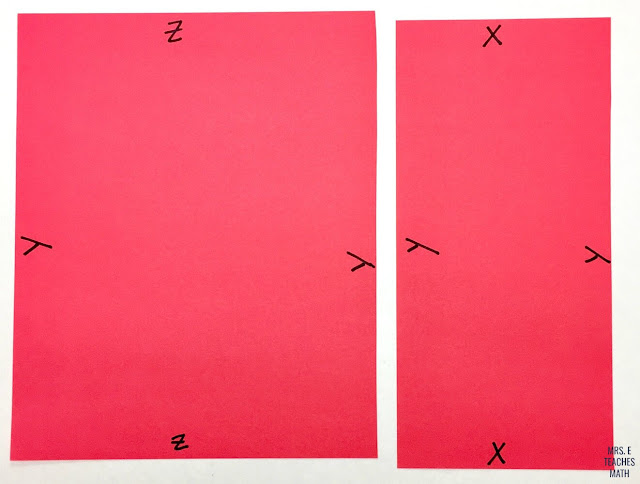Every year I try to do a better job of helping students understand the formulas for finding area. Students always try to teach it as a matching game. The shape looks like this, use this formula, plug in numbers. I want them to UNDERSTAND where the formulas are coming from.
I’ve done investigations and discovery activities before, but I think sometimes simple can be powerful. (Have you seen my post about the wordless Pythagorean Theorem proof?)
You can do this discovery activity under a document camera and have students discuss as a class or you could make this into a worksheet and have them complete it with a partner or a group. I like to do this as a whole class activity and show the pieces under the document camera.
First, cut a piece of paper into two rectangles. Label the sides.
Have students determine the area of the whole rectangle. To do this, they will need to add the bases of the two smaller rectangles.
Cut along one the diagonal of one of the rectangles. Now, the rectangle can be manipulated to make new shapes.
Move the pieces to make a parallelogram. Find the area of the parallelogram. Show students that it’s still the same area, but that you need the base and height of the original rectangle in order to find the area of the parallelogram. How does this compare to the area of the rectangle?
Move the pieces to make a trapezoid. Show students that they need to write the area equation as the sum of the two smaller rectangles. Then, show them how that relates to the formula of the area of a trapezoid. The reason the 1/2 is in the formula is because the z appears twice in the base of the trapezoid.
After that, you can cut the pieces further and manipulate more, if you wish. I like to model all of this and do it with my students, because I have many that give up halfway through. Also, I can point out little things along the way that they may not have noticed for themselves.






